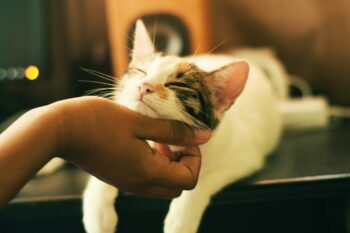Before the economy went south last fall, 29-year-old teacher Bethany Clay took her long-haired cat, Charlie, to the groomer every six weeks. “He always looked so nice after his $45 bath with a comb,” says Clay. However, when she became worried about her job security, Clay began to eliminate extras from her budget. “I’m trying to save more these days, so I brought a comb that my groomer recommended, and I’ve been brushing Charlie out every week at home.”
Professional groomers may offer convenience, expertise and a more finished look, but your cat can also benefit from what you can provide at home. Debbie Felder, owner of the Granada Hills, Calif.-based Bowser’s Natural Pet Grooming and a product tester for grooming product company Bamboo Pet, offers tips on home care for your furry friend’s coat, skin, nails and teeth.
Brushing
Brushing your feline keeps its coat shiny, stimulates circulation, gets rid of loose hair and keeping mats at bay. While shorthaired cats can be brushed approximately every 14 days, longhaired cats need more regular sessions, at least once a week.
“Cats have thin skin, so comb gently,” says Felder. “Make sure to check for mats, especially around the ears, where the oil deposited by human hands can lead to trouble.” Mats should be lightly combed out with a steel cat comb.
Washing
While cats clean themselves, even the most dedicated self-licker may need a bath to treat a skin condition, kill fleas or just deal with a big kitty mess. Felder recommends bathing your cat after brushing. She also suggests using a massaging showerhead while your pet is in a wire cage. “If you don’t have a cage, hold your cat by the back of the neck or ask a friend to help restrain the cat while you bathe it. Talk to it soothingly to keep it calm.”
Lay out your supplies in advance to streamline the process. These should include a showerhead or pitcher, shampoo and a towel for drying, since most cats will not tolerate a blow dryer. “Cats are very sensitive to chemicals, so use a shampoo specifically formulated for cats and rinse it out thoroughly. I don’t recommend conditioners: They leave the animal too greasy,” says Felder.
Pedicuring
Regular human nail clippers work just fine on a cat, but Felder also recommends using a Dremel — an electric, rotating stone that you can buy at any hardware store. “Have somebody hold your cat while you push on the paw to get the nail to extend,” advises Felder. Clip or file only the sharp tip, staying within the clear portion of the nail.
Teeth Cleaning
“You can brush your cat’s teeth, and it’s easy because they don’t have a lot of them!” says Felder. Still, your pet must be prepared for the process. Allow the cat to become used to your finger in its mouth over a few days. Start by flavoring your finger with tuna water and letting your kitty lick you before rubbing your flavored finger over its teeth and gums.
Next time, place a tuna-soaked piece of gauze over your finger, and rub the animal’s gums and teeth. Finally, introduce the toothbrush in the same way you did your finger, dipping it in something appetizing and letting your cat lick it. Flavored toothpastes will help keep the process tasty.
Rules for Good Grooming
- Keep grooming fun. Approach your cat when you are relaxed and in a good mood. Don’t get frustrated. Talk nicely to your cat throughout the session.
- Tread lightly. Learn from the mistakes of human groomers you’ve worked with. Be gentle with your hands, keep water at a comfortable temperature and don’t force your cat to remain in an uncomfortable position for too long.
- Stop sooner rather than later. If your cat begins to resist you during a brushing or filing session, let it go. Finish another day.
- Ask for help. If your cat just isn’t being cooperative or has mats you can’t tackle, a visit to a local groomer may be the solution. “Most groomers will be happy to demonstrate good techniques for you if you’re having trouble,” says Felder. This will help to keep you — and your little love — enjoying the togetherness of grooming time for years to come.







